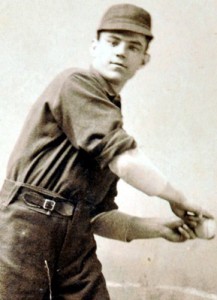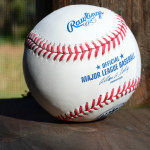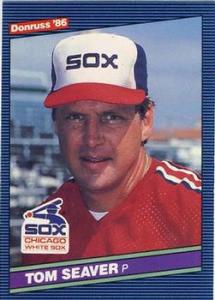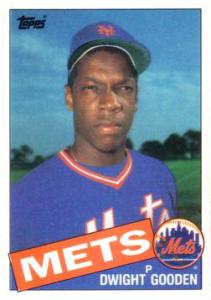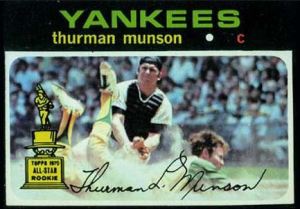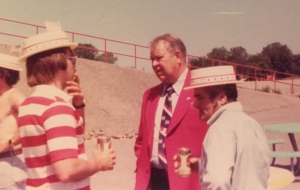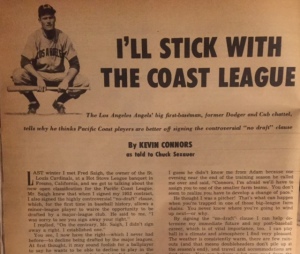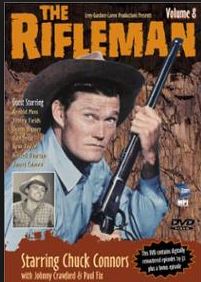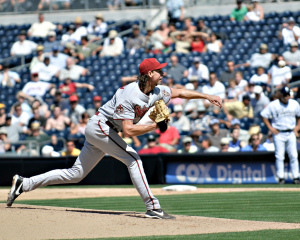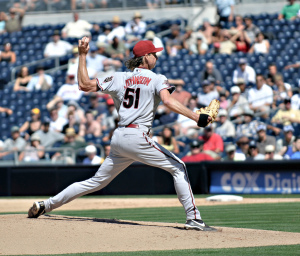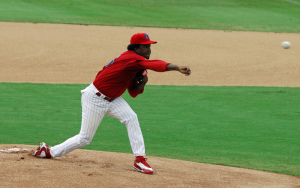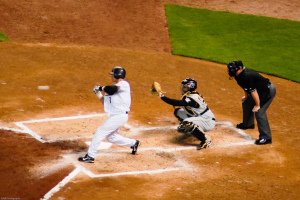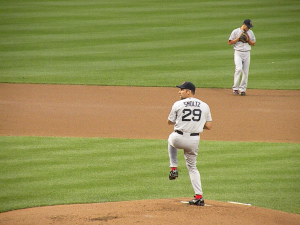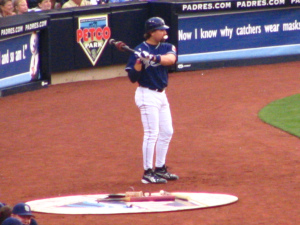When you think of strikeout artists, a lot of names come to mind – Ryan, Koufax, Johnson, Feller. The major league single season strikeout leader, however, is seldom on that list – despite the fact that he whiffed so many hitters, baseball actually experimented with a four-strike rule the season after he set the record.
The player was Matt Kilroy, the year was 1886, the team was the Baltimore Orioles and the southpaw’s record of 513 whiffs in a single season has stood for more than 125 years. Even more surprising, Kilroy set the record in his rookie season (which began two months shy of his twentieth birthday.).
Kilroy – a 5-foot 9-inch, 175-pound southpaw – broke into the American Association (considered a major league) on April 17, 1886 (Opening Day) – pitching for the Baltimore Orioles and picking up a 4-1 victory. Victories, however, would prove hard to come by for the rookie hurler, as the Orioles would end up finishing dead last, with a 48-83 record. For the season, Kilroy would win 29 games, while leading the league with 34 losses. Overall, he started 68 of the Orioles’ 131 games, tossing 66 complete games, posting a 3.37 ERA and striking out a STILL major league record of 513 hitters in 583 innings.
The rules were a bit different back then. There was no mound and no pitching rubber, but rather a flat, pitcher’s box (rectangle) the front line of which was 50-feet from home plate. (The current pitching distance, from the mound and pitching rubber to home plate, is 60-feet, six inches.) It also took six balls to walk, but hitters could call for a high or low pitch.
BBRT note: The modern record for strikeouts in a seasons is 383 by the Angels’ Nolan Ryan in 1973 (21-16, 2.87 with 383 whiffs in 326 innings); while the rookie record is 276 by the Mets’ Dwight Gooden in 1984 (17-9, 2.60, 276 strikeouts in 218 innings). In his MLB career, by the way, Ryan led the league in strikeouts 11 times, walks eight times and wild pitches six times – three times leading the league in all three categories in the same season.
After Kilroy’s remarkable 1866 strikeout totals, which earned him the moniker “The Phenomenal Kid,” the American Association experimented (for the 1887 season) with a four-strike strikeout rule. Kilroy’s strikeout total dropped to 217, but he was still effective, leading the American Association in wins (46 versus 19 losses), games started (69), complete games (66), shutouts (6) and innings pitched (589 1/3). Kilroy’s 46 wins remains the single-season MLB record for a left-handed pitcher.
Here’s a little background on this MLB record holder.
Matthew Aloysius (Matt) Kilroy was born on June 21, 1866, in Philadelphia. He was the seventh of 13 siblings. He dropped out of school is in his teen years to help support the family, yet still found time to build a reputation as an outstanding amateur pitcher.
Kilroy got his first taste of professional baseball in 1885, with the Augusta Browns of the Southern League, where he went 29-22, with a 0.97 ERA, 49 complete games in 52 starts and 363 strikeouts in 447 innings pitched. His performance did not go unnoticed, and made his major league debut – and major league history – with the Orioles the next season
Despite winning 75 games in his first two seasons, you will not find Kilroy’s name among the top MLB winners. Late in the 1887 season, he suffered a shoulder injury in an on-field collision. The effects of that injury carried over into the following season (1888), when Kilroy went 17-21, 4.04 and dropped to 40 starts (35 complete games – not bad for a sore-armed pitcher and a reflection of how the game has changed). In 1889, he rebounded to a 29-25, 2.85 stat line – matching his 217 strikeout total of his 46-win season of 1887. Whether it was overwork or the earlier shoulder injury, Kilroy’s arm problems grew progressively worse and in six more major league campaigns, he went 20-34 – ending with a career mark of 141-133, 3.47 – and, as was the expectation of the times, 264 complete games in 292 starts.
Still, 117 years after he threw his last MLB pitch (1898), Matt Kilroy holds the single-season strikeout record for all of MLB – as well as the single-season victory record for southpaws.
Phenomenal Kid, indeed.
